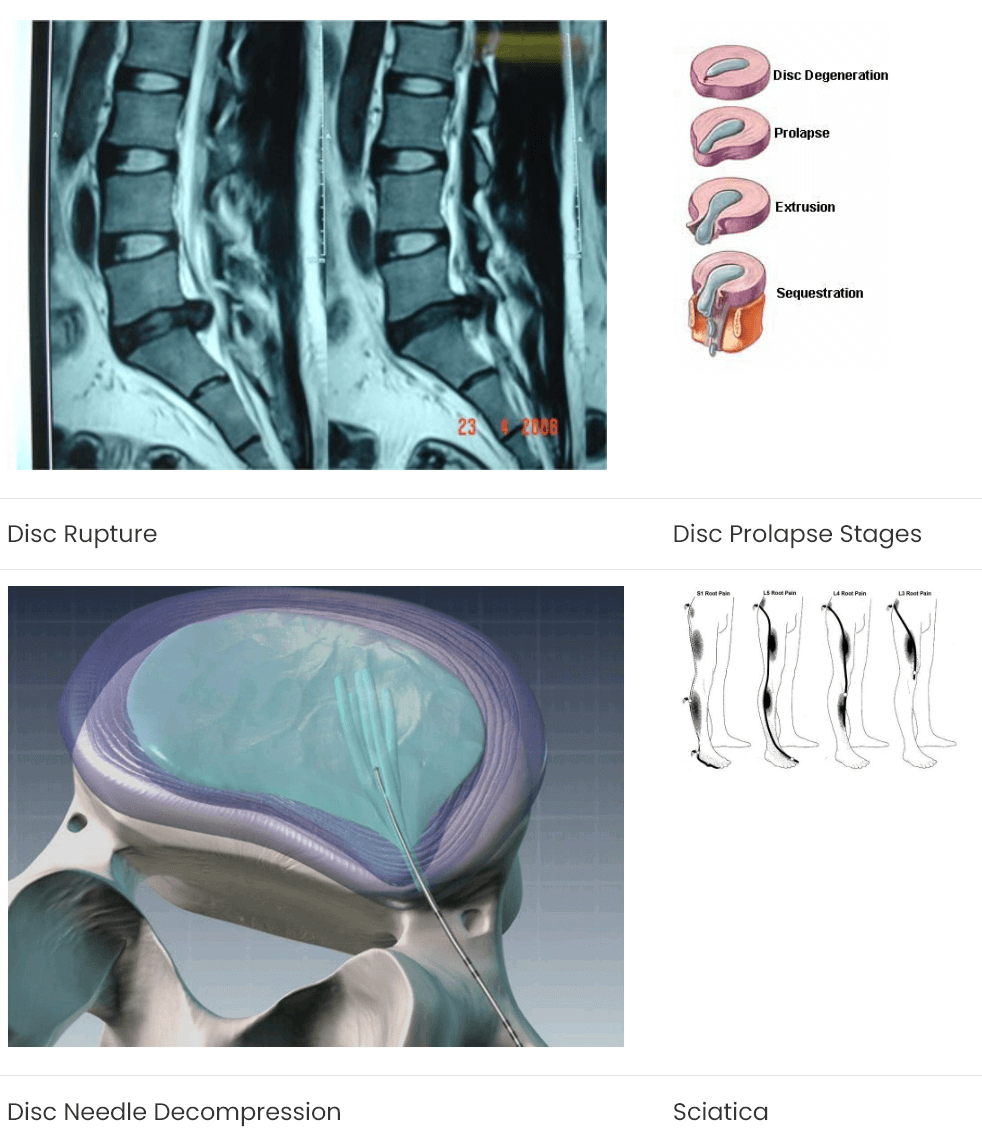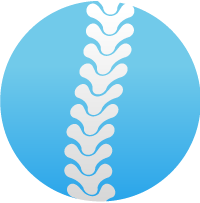HERNIATED/PROLAPSED/SLIP DISC WITH SCIATICA:
The inter-vertebral discs are made-up of two concentric layers, the inner gel like Nucleus Pulposus and the outer fibrous Annulus fibrosus. As a result of advancing age, the nucleus looses fluid, volume and resiliency and the entire disc structure becomes more susceptible to trauma and compression. This condition is called as degeneration of the disc. The disc then is highly vulnerable to tears and as these occur, the inner nucleus pulposus protrudes through the fibrous layer, producing a bulge in the inter-vertebral disc. This condition is named as herniated disc. This can then cause compression to the spinal cord or the emerging nerve roots and lead to associated problems of Sciatica radiating pain from back to legs in the distribution of the nerve.
Other symptoms could be weakness, tingling or numbness on the areas corresponding to the affected nerve. Sometimes bladder compromise is also present, which is made evident for urine retention and this need to be taken care as an emergency.
Excessive weight, bad postures, undue movements, improper weight lifting and other kind of traumas may weaken the intervertebral discs. When this occurs the pulpous nucleus will bulge against the annulus, or even be squeezed through it (extruded disc).
The first steps to deal with a herniated or prolapsed lumbar disc are conservative. These include rest, analgesic and anti-inflammatory medication and in some cases physical therapy. At this point it is convenient to have some plain X-rays done, in search of some indirect evidence of the disc problem, as well as of degenerative changes on the spine.
If in a few days these measures have failed, the diagnosis has to be confirmed by means of examinations that give better detail over the troubled area, as the MRI, CT which will show the disc, the space behind it and in the first case, the nerves. In some instances the EMG (electromyography) is also of great value, as this will show the functionality of the nerves and muscles.
Once the diagnosis has been confirmed, one of the best alternatives existing today is the Ozone Discolysis as the results obtained are excellent and practically has no complications. This novel treatment avoids the use of surgery in 80% of those who needed it. In most patients left with pain killers as the only treatment, the symptoms eventually disappear, only that this could take weeks to months. Ozone speeds up these developments, seen the same result in a few weeks. The problem has to be seen and approached integrally and frequently the combination of therapies has to be used, most frequently physiotherapy. Also, it has to be known that those who had a herniated disc have 10 times more chances of having another herniation than the rest of the population.
If despite the ozone therapy the symptoms persist, Drill Discectomy/ Laser Discectomy are good alternatives before open surgery (Discectomy) which has to be contemplated in those true emergencies, as mentioned above, this is possibly the first choice.


